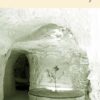David Meckel, FAIA, was AIACC Vice President for Communications when Architecture California metamorphosed into arcCA. Over tea at Olivetto’s Café in Oakland, Meckel interviews Jerry Weisbach about his pioneering dual career of architecture and law.
David Meckel: Jerry, when we first met thirty years ago, you had just become the Dean of the School of Architecture and Fine Arts at USC, where I was an undergraduate student. You left that position after three years. Is there any truth to the myth I’ve tried to perpetuate all these years that your advocacy for saving Marshall High School and the subsequent charges the national AIA brought against you were the impetus for your career change to law?
Jerry Weisbach: No, but it sounds like you’ve enjoyed telling that story. What really happened was that the charges of unprofessional conduct were dismissed, and the school was saved. Several years later, the architect apologized to me for bringing the charges—he said that he was directed to bring charges by his home office.
DM: Then how did your law career start, and how did you pioneer a law practice unique to the design professions?
JW: I had always been interested in the law, not as a profession, but rather as an intellectual pursuit. In fact, I had applied to law school early in my architectural career, when I was working in John Carl Warnecke’s San Francisco office in 1960. My motivation was that I didn’t enjoy working there. Then I realized I didn’t have to go back to school to solve that; I could just quit. So it was another sixteen years before I acted on my law school urge.
DM: Prior to working for Warnecke, you had quite an interesting set of experiences with other notable architects. Can you talk about those?
JW: The first six months out of school, I worked for a couple of good, small firms doing production work on housing projects. My good friend, Bernard Zimmerman, was working for Richard Neutra at the time, and he called to say that they needed someone to act as a job captain on a six million dollar military housing project. It had to be completed in just six weeks. I took the job and had a terrific couple of years working with Neutra. When my wife, Clarice, and I decided to start a family, I told Neutra that we planned to move to the Bay Area. He said, “Why do you want to leave? I do all of the unpleasant parts of running this office, and you get to sit here all day designing and drawing fantastic projects.” He graciously wrote letters for me to a number of significant Bay Area architects, including Ernest Kump and Rafael Soriano. Soriano called and hired me over the phone. We moved up and I joined his office in Tiburon.
DM: That seems too good to be true.
JW: At the risk of appearing immodest, I was a really good draftsman. I could organize a set of drawings well. It was my training at Neutra’s. This skill would come to serve me well later in my law practice.
DM: So you had terrific practice experience followed by the deanship at USC. Was the law career the logical next step?
JW: Yes and no. After USC, I had a sort of early midlife crisis. My wife and kids wanted to move back to the Bay Area, and we were able to sell our house in Los Angeles for enough of a profit that I did not need to return to work right away. I didn’t know what I wanted to do, but I knew I didn’t want to teach—I had been on the faculty at Berkeley since 1964—nor did I want to go back to the practice of architecture. I decided to take some time off and go to law school, but with no intention of ever becoming a lawyer. My family was fantastic. I spent seven days a week either in classes or in the library at Hastings. The first year of law school is very prescriptive, but years two and three allow great freedom. I took very few traditional classes, focusing instead on a wide variety of things that interested me. By the time I graduated, I had only taken three or four of the dozen subject areas that you needed for the Bar Exam. I studied all summer before the exam and managed to pass. I spent the rest of that summer renovating our house, until my wife showed me the zero balance in our bank account. It was time to go back to work.
DM: So what did you do next?
JW: First, I wrote letters to the chairmen of thirty or so companies that all had significant building programs. I received some nice responses and a few job offers, but none of them seemed right. I continued to talk to friends and friends of friends in real estate, law, and business. A friend had suggested that I talk to Ed Howell at DPIC. After talking to him for an hour, he hired me and gave me an office, even though I knew nothing about insurance. When I asked him what it was that I would do at DPIC he said, “I don’t know, but there ought to be something.” I started to assist their insurers with loss prevention programs, and I reviewed client contracts, since I knew the AIA documents very, very well. I developed questionnaires and tests for their clients that provided a ten-percent rate cut if they participated. Many clients were also having trouble with contract negotiations, so I started providing that service as well.
DM: Did they have a large number of design professionals as clients?
JW: Mostly engineers when I started, but DPIC became one of the largest insurers of design professionals in the nation by the time I left to go out on my own.
DM: So you hung out your law shingle and started doing loss prevention consulting out of your house. How did you get into litigation?
JW: One by one, my architect friends got into trouble and asked for help. I got much busier than I wanted to be. Finally my wife said, “Either you move out or I do.” I started sharing office space with Ken Natkin, another architect turned lawyer, in 1983, and soon after we formed the firm Natkin & Weisbach (later Natkin, Weisbach & Higginbotham). We grew like crazy to twenty-six lawyers plus support staff in two offices, San Francisco, and Orange County. Almost all of our lawyers were also trained as design professionals: architects, engineers, and landscape architects.
DM: How long did this run last?
JW: Since there’s a recession in architecture every ten years, we closed the Orange County office in 1991, and eight of us joined up with Long & Levitt.
DM: Did this change your working method?
JW: Not in a fundamental way. Most lawyers hate their work and their clients. We had the good fortune of working with our friends. Also, because we were all trained in design, we worked collaboratively. This is very un-lawyer like.
DM: So are you retired now?
JW: Sort of. I’m doing some pro bono work for places like the SF Jewish Contemporary Museum, SPUR, and several younger architects without funds, and I’m developing ideas for courses. I’m retired, but not tired. I’m also doing some legal work for several old clients who are comforted by white hair (very little of it) and a little consulting as an expert for other law firms. I do manage to have time to travel, read, tie flies, and fish on occasion.
Originally published 1st quarter 2005, in arcCA 05.1, “Good Counsel.”






